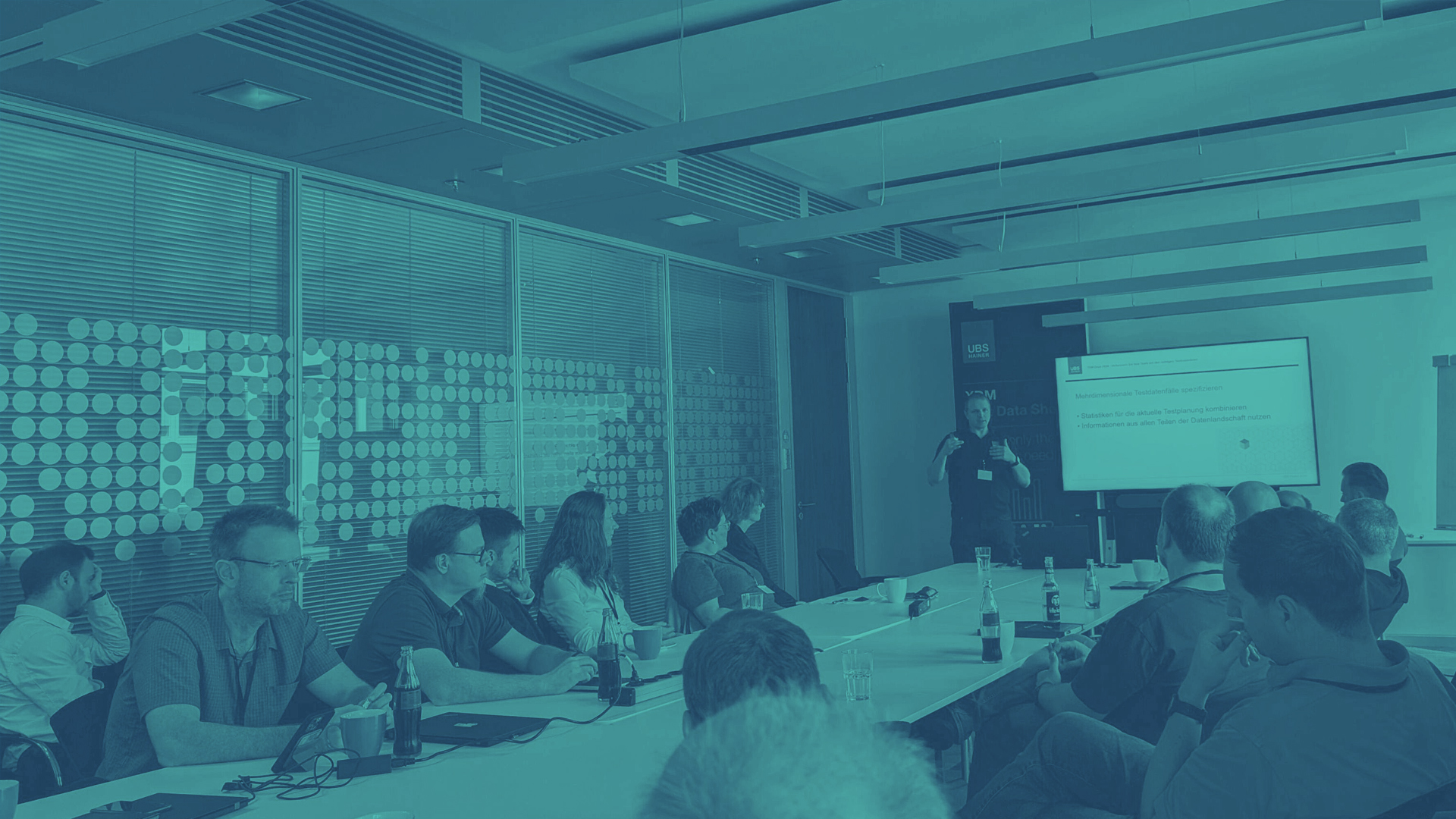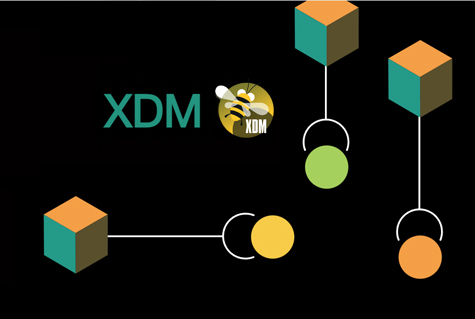Maintaining an ongoing dialog with users is critical to software development. Applications are constantly evolving and must be adapted to meet ever-changing requirements. User input is invaluable in guiding the direction of new releases. At UBS Hainer, we rely on various forms of interaction to develop our Test Data Management (TDM) platform XDM in line with the actual needs of our customers.
A particularly successful format is the annual Test Data Days, which brings together users, prospects, and developers. This event fosters direct exchange and provides valuable insights for all involved. In this article, we’d like to introduce you to this engaging format.
Day 1: XDM Day – Putting Customer Needs First
The first day, known as XDM Day, focuses on the needs and experiences of existing customers. This day provides an ideal opportunity for users to share their experiences with the XDM tool, gain valuable tips and best practices from other users, and deepen their knowledge. This exchange enables customers to adapt XDM more effectively to their specific requirements and identify features that may have previously been underutilized.
Furthermore, direct contact with the developers allows customers to contribute suggestions and requirements, thereby actively influencing the future development of the software. XDM Day is a crucial event in the software’s development cycle, as it ensures that XDM continues to improve and aligns closely with the actual needs of its users.
From the developers’ perspective, this interaction is invaluable. XDM Day provides an opportunity to showcase the latest features and developments while receiving immediate feedback from users. This feedback helps them gain a better understanding of customer requirements and gather ideas for future improvements and innovations, ensuring XDM’s continuous evolution in line with customer needs.
Highlights from the 2024 XDM Day Include:
- Internal Permissions Management: Discussion on best practices for efficient task distribution and implementing permission structures within XDM, including optimizing role definitions and access for smoother collaboration.
- Meta-Test Coverage: Exploring methods to conduct tests on XDM configurations and modification techniques to improve quality and coverage.
- Modernization and Further Development of XDM Configuration: Modernizing the existing XDM configuration, such as migrating from JavaScript to Groovy, applying clean code practices, using generic approaches, and introducing functional programming.
- Regulatory Topics and Compliance: Practical examples demonstrate of how XDM can support adherence to regulatory requirements, including reporting and documentation.
- Code Analysis and Refactoring: Tips for maintaining and optimizing code to improve the efficiency of XDM projects.
- Release Management: Best practices for handling new XDM releases, deciding when to update, and integrating new versions into existing environments.
- The next evolution in Test Data Management: A preview of the future of test data management, including trends and developments such as the use of services for test data extraction and the transition from mere data management to the provision of relevant, business-related examples for all test levels.
In addition to these thematic focuses, XDM Day provides numerous opportunities for networking. During breaks, over lunch, and in the evening at the bar, participants can connect with other users and establish valuable contacts. This informal exchange is often a highlight for attendees, as it allows them to share experiences and ideas with colleagues from various companies and industries.
A demo station is also available during breaks, offering live demonstrations based on participants’ requests.
Timo Schneider, Sales Representative at UBS Hainer, describes the atmosphere as follows: “For our customers and prospects, this day is a fantastic opportunity to deepen their knowledge of XDM. By learning about best practices from different application areas and discussing optimal tool usage, they gain numerous valuable insights for their work.”
Day 2: A Broader Perspective for Users and Prospective Customers
The second day of Test Data Days is designed not only for existing users but also for prospects interested in gaining insights into test data automation and the functionality of XDM. This is an excellent opportunity to gain a professional yet non-binding understanding of the software. By the end of the day, attendees will have a clear understanding of the practical value that the tool can bring to their own organizations. Particularly helpful are the use cases presented by customers like General, ROBO Digital, and Unions Bank.
Timo Schneider comments: “There are always many questions and lively discussions at Test Data Days. You can truly sense a strong sense of community because everyone in the room is dealing with similar questions and challenges. This event provides one of the few opportunities to engage with other users and UBS Hainer developers outside of your day-to-day work.”
Key Topics on the Second Day Include:
- Complex System Landscapes: Demonstrating how XDM’s Test Data Finder can be effectively used to locate appropriate test data in complex system landscapes, even when testers are unfamiliar with the database structures.
- Automated data delivery processes: Learn how to set up an efficient data provisioning process to automate tests, and how to reset and reuse previously used data to accelerate test automation.
- Successful Project Implementation: Prospects are particularly interested in learning how to successfully implement a test data management project using TDM. includes everything from requirement definition, proof-of-concept, to implementation and operational strategies.
- Data Privacy in Test Data Management: The implementation of effective masking techniques, considering GDPR compliance, is discussed. Real-world examples illustrate how XDM reliably masks personal data, both in complete datasets and in individual cases, to meet data privacy requirements.
- Artificial Intelligence in Test Data Management: The role of AI, particularly Large Language Models (LLMs), is explored in-depth. Attendees will gain insight into how AI-based systems can generate realistic test data, classify data, create configurations, and even correct errors.
- Discussion Round – Open Space: Throughout the day, topics are gathered for a final discussion session. A whiteboard serves as a collection point for questions and suggestions, which are then addressed and discussed in a plenary session.
Conclusion
The experience of the annual Test Data Days shows the importance of direct exchange between users, developers, and prospects in creating innovative solutions in the field of test data management. The diversity of topics and the networking opportunities provide great value to all attendees. With this in mind, we’re already looking forward to Test Data Days 2025.


